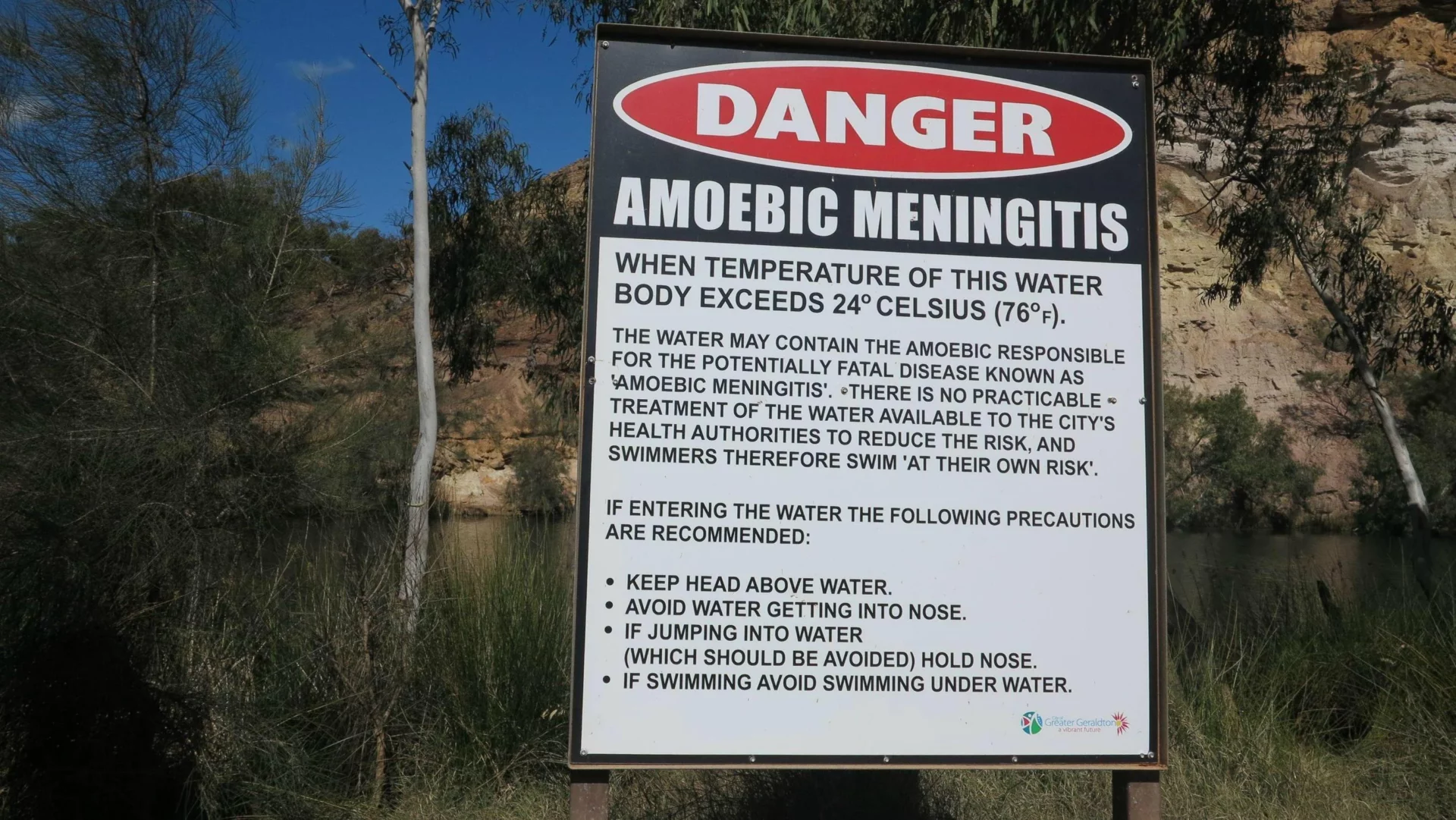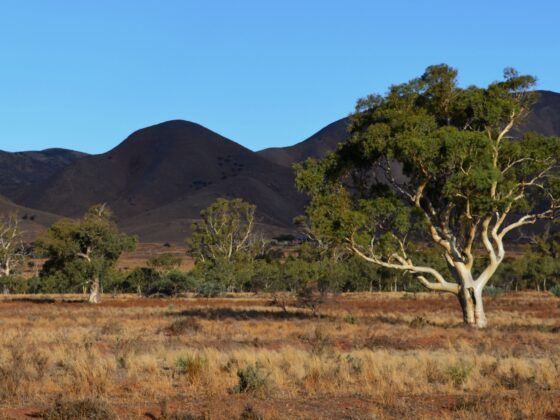A recent photo of a warning sign about amoebic meningitis has exploded on Reddit, leaving thousands rattled about this lesser-known yet potentially deadly danger lurking in some of Australia’s waterholes. Found in the outback, this stark red and white sign spells out the risks of swimming in water above 24°C (76°F), and the concerns are very real. Here’s everything you need to know about this terrifying threat and why it’s important to pay attention.
What Is Amoebic Meningitis?
Amoebic meningitis is caused by the Naegleria fowleri amoeba, a microorganism that thrives in warm freshwater. It enters the body through the nose, where it travels to the brain, causing a devastating infection known as primary amoebic meningoencephalitis (PAM). The condition progresses rapidly, and tragically, it is almost always fatal.
The N. fowleri amoeba loves temperatures above 24°C, making it a serious concern during Australia’s warmer months when outback waterholes and thermal pools reach toasty highs. It’s not something you’ll find in your backyard pool (if it’s chlorinated properly) but is a risk in stagnant natural water sources such as dams, lakes, and slow-moving rivers.

Why Is It So Scary?
What makes amoebic meningitis terrifying is its speed and severity. Symptoms—such as headache, nausea, fever, and a stiff neck—can appear just days after exposure, progressing to confusion, seizures, and death within a week. Unfortunately, there’s no practical treatment for water contaminated with N. fowleri. Swimmers are warned they enter at their own risk, as health authorities cannot completely eliminate the threat.
Where Is It Likely to Happen?
The amoeba is found worldwide, but in Australia, it’s most prevalent in northern states like Queensland, the Northern Territory, and parts of Western Australia. It thrives in the outback’s warm freshwater systems, particularly in the summer when water temperatures spike. Tourists and locals are drawn to these natural oases to escape the heat, but without proper precautions, a refreshing dip can turn deadly.
This doesn’t mean every waterhole is dangerous. Flowing rivers and shaded, cooler pools are less likely to host the amoeba. However, thermal springs, especially those popular with travellers, often carry this risk.
Is This an All-the-Time Issue?
The risk isn’t constant. N. fowleri needs a warm environment to survive, so the problem typically arises during the hot summer months when water temperatures climb past 24°C. Wintertime or cooler climates generally mean the amoeba cannot thrive, making these locations safer during those times of the year.
What Can You Do to Stay Safe?
If you’re planning an outback adventure and want to avoid being on the wrong side of this risk, take note of these precautions:
- Keep your head above water: The amoeba enters through the nose, so avoiding submersion is key.
- Don’t jump in: Water forced up your nose from a high-impact jump is a surefire way to increase exposure.
- Skip underwater swimming: Staying above the surface is a much safer bet.
- Follow local warnings: If there’s a sign like the one above, take it seriously—it’s there for a reason.
Should You Avoid Swimming Altogether?
Not necessarily. While amoebic meningitis is a serious and valid concern, it’s also quite rare. Following the recommended precautions greatly reduces your risk. If you’re swimming in cooler, fast-moving water or visiting in winter, the danger is minimal. The key is to be aware of your surroundings and exercise caution in warm, stagnant water during summer.
Conclusion
The internet’s reaction to this sign reflects just how little many people know about amoebic meningitis. It’s a sobering reminder of the hidden dangers in some of Australia’s most iconic landscapes. While it shouldn’t deter you from exploring the outback’s stunning natural beauty, it’s a stark warning to take care when cooling off in those inviting waterholes. Keep your head up—literally—and enjoy your adventures safely.













